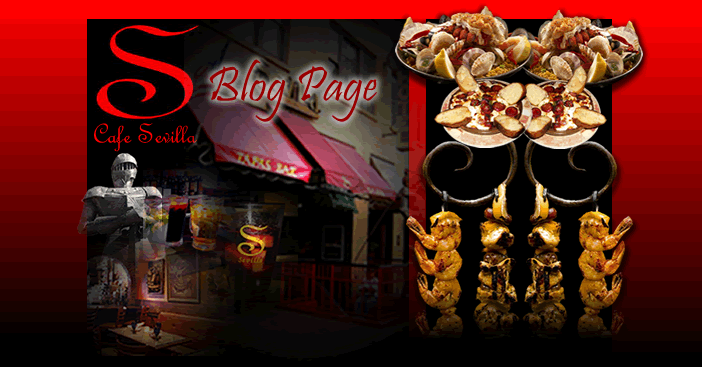 No understanding of Spanish history and culture can be complete without an appreciation of Flamenco, the authentic live music and dance that has been part of the Spanish heart and identity for more than 500 years.
No understanding of Spanish history and culture can be complete without an appreciation of Flamenco, the authentic live music and dance that has been part of the Spanish heart and identity for more than 500 years.Flamenco is the passionate, sometimes melancholy music of the gypsies of Andalusía in Southern Spain, with the city of Sevilla at its heart. It is heavily influenced by the Moors of North Africa who ruled Spain for more than eight centuries.
The origins of Flamenco are often a subject of debate because it has only been documented for the past two centuries. The word “Flamenco” did not come into use until the 18th century. Much of its history before this time comes from family stories passed down through the years, as are the Flamenco songs themselves.
 |
| Historic photo of gypsy performers |
One certainty about Flamenco is that it originated in Andalusia. From the 8th to the 15th centuries, when Spain was under Arab rule, the Moors’ music and musical instruments were modified and adapted by Spanish Christians and Jews, and later by gypsies, becoming in time a new, hybrid musical form.
Flamenco’s roots can be found in gatherings around the campfire at night. With their guitars, drums, and castañets, gypsies would spontaneously break into a juerga, an impromptu outburst of guitarra (guitar playing), cante (song), and baile (dance), rhythmically snapping their fingers (pitos), clapping (palmas), and stamping their feet (zapateados). Over the years this evolved into a dance form with its own songs and traditions, including the women’s costumes of long, flared skirts and fringed shawls that accentuate every twirl.
Between 1765 and 1860, the first Flamenco schools were formed in Cadiz, Jerez de la Frontera, and the Triana sector of Sevilla. The Golden Age of Flamenco (1869-1910) saw a flourishing of cafés cantantes (music cafés) where nightly performances saw dancers perfecting the different forms of Flamenco for enthusiastic audiences. The more serious songs and dances expressing cante jondo (deep feelings and emotion) date from this era. Dancers, guitar players, and singers featured in these cafés cantantes became internationally famous.
Gypsies and their art form suffered during the Spanish Civil War, and were one of the persecuted minorities during the Second World War. It wasn’t until the 1905s that a sort of Flamenco Renaissance was able to take shape. Outstanding dancers and soloists soon made their way out of the small tablaos, successors to the early cafés cantantes, to the great theatres and concert houses.
 |
| Famed guitarist Paco de Lucia |
Although mass media has brought Flamenco to the world stage, it has always been and will always remain an intimate kind of music. The relationship between dancer and guitarist makes Flamenco unique as a dance form. Contrary to most dance forms, it is the guitarist who follows the dancer’s prompts. Duende, the baring of one’s soul in all its frank emotion, is another crucial element of Flamenco. Passion, longing, and a deep pride are the feelings most frequently expressed through these dances and songs.
Modern Flamenco is a highly technical dance style requiring years of study. The emphasis for both male and female performers is on lightning-fast footwork performed with absolute precision. The dancers often use props such as castanets, shawls and fans.
Flamenco is currently enjoying an unprecedented popularity around the globe, with professional touring companies spreading the art form to every continent, and schools and studios in major cities worldwide. Students from all over the world travel to study with the best dancers and teachers in Sevilla, still the homeland of Flamenco.



No comments:
Post a Comment